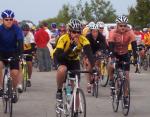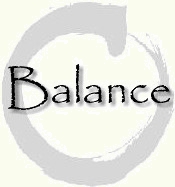Sports Massage

Staying at the Top of Your Game
Massage not only feels good, but can also provide an edge for sports training and performance. All athletes look for a way to help them train more effectively, perform better and overcome injuries more quickly. Sports massage techniques deliver for both the professional and amateur athlete.
Regular sports massage can:- Reduce the chance of injury by relieving stress points in muscles before they result in restrictions or spasm.
- Improve range of motion and muscle flexibility, resulting in improved power and performance.
- Maximize the supply of nutrients and oxygen through increased blood flow.
- Aid the body’s regular processes for recovery from exercise and reduce recovery time.
- Decrease performance anxiety and sharpen mental focus.
The overall objective of massage, when included in a training program, is to help an athlete reach optimal performance through injury-free training.
Pre-event massage is used to supplement an athlete’s warm-up to enhance circulation, improve tissue pliability and reduce muscle and mental tension prior to competition.
Post-event massage, on the other hand, is aimed at reducing muscle spasms and metabolic build-up that occur with strenuous exercise.
Whether it's professional marathon training or weekend warrior sports, getting a massage can ease muscle soreness, help your body recover more quickly, and get you ready to go again. And, of course, massage helps you deeply relax--an important key to overall wellness.
Our Muscles and Massage
Our muscles are designed to adapt to the demand of strenuous exercise. Athletic training and competition, or even exertion from heavy physical work, tears down the muscles involved. When muscles are allowed to recover following a workout, they increase their number of fibers to respond to the demand. This adaptation process builds strength in muscles and in the structural support of the surrounding soft tissues. It also affects their ability to relax. Regular massage reduces the risk of injury by maintaining flexibility and range of motion. By helping the body eliminate the metabolic by-products of a workout, massage shortens recovery time and reduces soreness. In addition, massage improves circulation, which enhances athletic performance by increasing the oxygen and nutrient supply to the muscles. Triathletes and runners aren't the only athletes who benefit. Cyclists and winter sports fanatics are taking to massage as well. A massage therapist can help assess each athlete's problem areas and target these specifically.
When to Get a Massage
Depending on the athlete's specific sport and physical demands, massage can be targeted to different aspects of the athlete's needs. Massage is most effective when integrated throughout an individual's training program.
Training
By getting regular massages during the training period prior to an event, an athlete can avoid injury, maintain flexibility and range of motion, recover more quickly from workouts, and reduce fatigue. Depending on how strenuous the training, it may be important to see your massage therapist weekly or even more often, especially during the heaviest part of your training. Your massage therapist can work with you to establish a schedule for your needs.
Pre-Event Massage
Many formal athletic events, including running races, triathlons, and tennis tournaments, provide onsite massage. Pre-event massages are usually short (10-15 minutes), and are designed to increase circulation, relax muscle tension, and calm pre-event jitters. A short massage can enhance performance so the athlete stays relaxed and on his/her game plan. For pre-event massage, talk to the therapist about your massage history. Bodies used to massage will react differently than those unaccustomed to bodywork.
Post-Event Massage
Recovery is the primary purpose of post-event massage. Athletes push themselves harder during an event than while training. For example, during a marathon most athletes run a greater distance during the event than they've ever run during their training. A massage afterwards is key. Post-event massage can be that first assessment for potential injuries, and more serious medical conditions (heat exhaustion or hypothermia) may be identified early and treated promptly.
Rehabilitation
Muscle strains, bruises from contact sports, and chronic soreness need special attention. Whether encountered during training or during an event, massage is a key component in assisting an athlete to return to their sport sooner. Massage therapists can work closely with doctors and athletic trainers to establish a schedule for therapy. Specific manual techniques reduce scar tissue and muscle spasm, and the enhanced circulation achieved from massage is crucial to healing.
Whether you train hard or just play hard - maintain your health and enhance your performance through regular sports massage.
